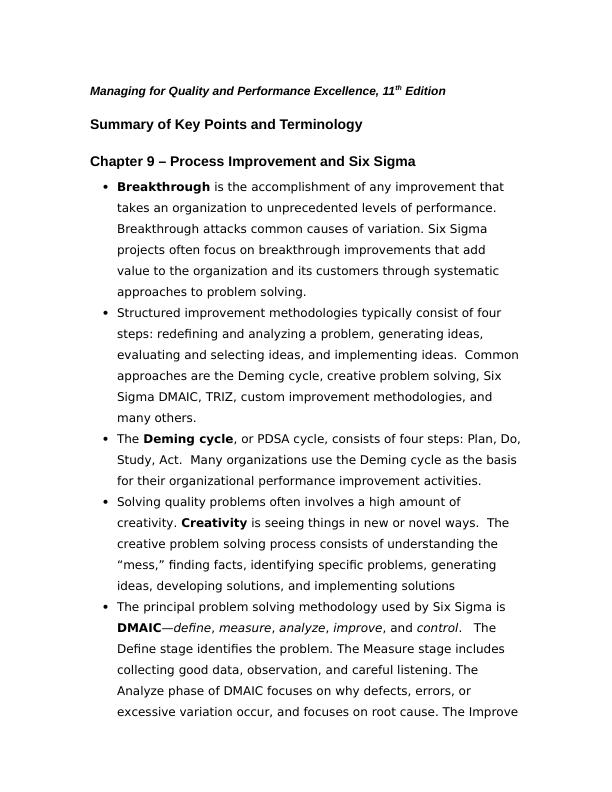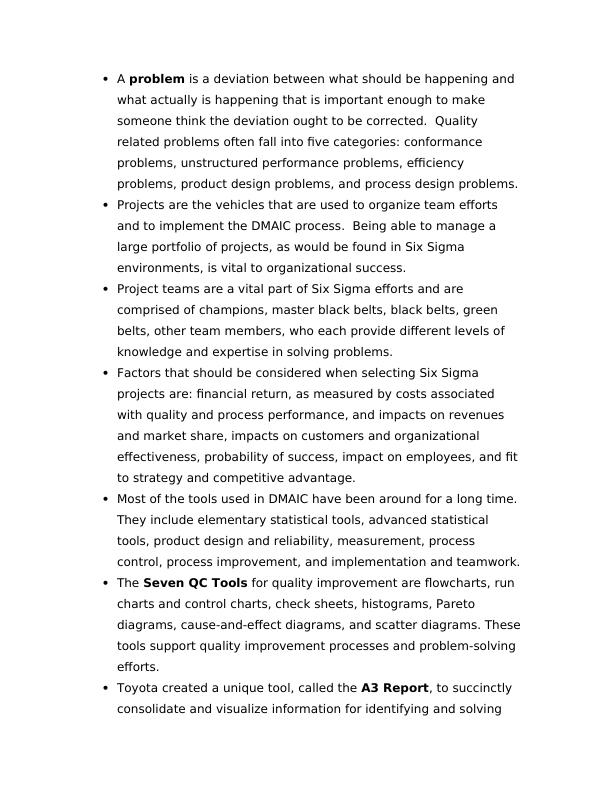Process Improvement and Six Sigma - Summary of Key Points and Terminology
7 Pages2054 Words449 Views
Added on 2021-10-27
About This Document
Read the summary of key points and terminology related to Process Improvement and Six Sigma. Learn about DMAIC, PDSA cycle, SIPOC diagram, and more.
Process Improvement and Six Sigma - Summary of Key Points and Terminology
Added on 2021-10-27
ShareRelated Documents
End of preview
Want to access all the pages? Upload your documents or become a member.
Management Tool for King Abdullah Medical City
|7
|460
|209
Facilitate Continuous Improvement for Australian Hardware: Lean, Six Sigma, Benchmarking, and More
|21
|876
|155
King Abdullah Medical City (KAMC) Assignment
|12
|1690
|79
Approaches of Operational Management
|19
|1876
|59
Quality Management: Theory, Examples and Contemporary Organizations
|9
|2648
|116
Operational and Project Management in Product Life Cycle
|16
|4285
|393



